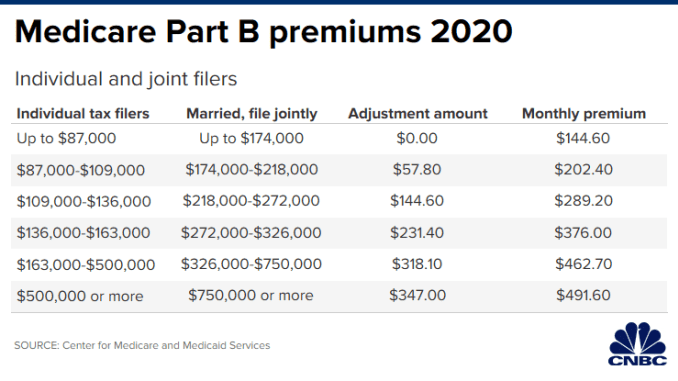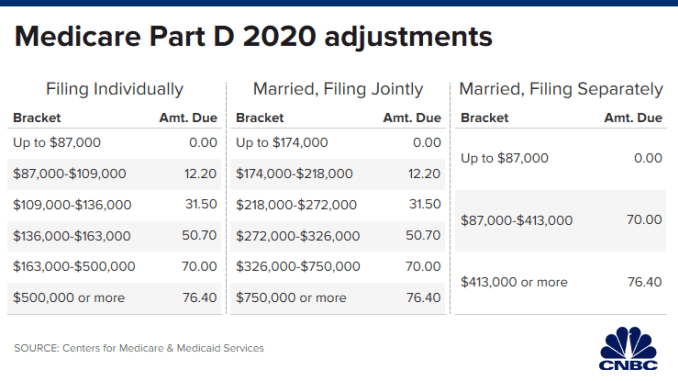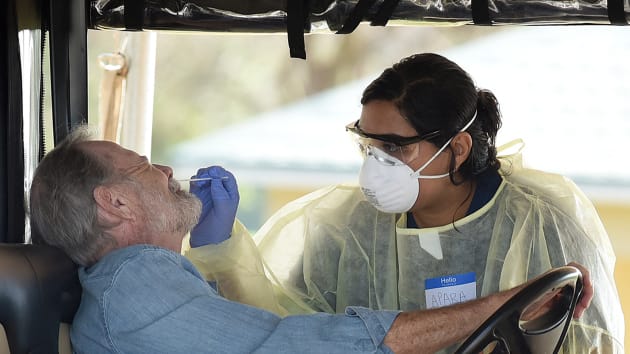You may already know that your payroll taxes help fund Medicare, which you’re generally eligible for at age 65.
That doesn’t let you off the hook for further outlays once you sign up, however. Depending on the particulars of your coverage and how often you use the health-care system, your out-of-pocket costs could hit six-figure territory over the course of your retirement, a report shows.
To cover premiums and out-of-pocket prescription drug costs from age 65 on, you might need $130,000 if you’re a man, according to the study from the Employee Benefit Research Institute. For a woman, that amount is $146,000.
Generally speaking, Medicare only covers about two-thirds of the cost of health-care services for the program’s 62.5 million or so beneficiaries, the majority of whom are age 65 or older (the rest are younger with disabilities or individuals with end-stage renal disease).
Although the numbers in the report are big, they are lower than the institute’s 2019 estimates. At this point, it’s unclear exactly what will happen to some Medicare costs next year, due to uncertainty over how the pandemic will affect various parts of the program. Already, premiums and deductibles get adjusted each year; copays and other cost-sharing for specific plans can, as well.
There’s an effort afoot in Congress to keep at least one cost from spiking in 2021. While Medicare Part A (hospital coverage) has no premium as long as you have at least a 10-year work history of paying into the program, Part B (outpatient care) comes with a standard monthly premium ($144.60 for 2020). A provision in the GOP’s proposed stimulus package, the HEALS Act, would keep that amount in place for next year instead of adjusting it upward.
Meanwhile, the institute’s report relies on the premium costs associated with original Medicare (Parts A and B) paired with a specific “Medigap” policy (Plan G, which pays for some Medicare cost-sharing, including co-pays, co-insurance and some deductibles). The calculation also includes premium costs for Part D prescription drug coverage and its associated out-of-pocket spending.

While most individuals qualify for premium-free Part A coverage, it has a deductible of $1,408 per benefit period for 2020, along with some caps on benefits. And on top of your Part B premium — which higher earners pay more for, detailed in the chart below — you have a $198 deductible. After it’s met, you typically pay 20% of covered services.
Parts A and B generally don’t cover prescriptions. That’s where a Part D drug plan comes in.
You can get a standalone plan to use alongside original Medicare. Or, you can sign up for an Advantage Plan (Part C). Those plans are sold by private insurance companies and usually include prescription drug coverage. If you go this route, your Parts A and B benefits will be delivered via the insurer offering the plan (which may or may not have a premium). Advantage Plans also have their own copays, deductibles and out-of-pocket maximums.
This year, many Advantage Plans have waived the cost-sharing involved in treating Covid-19, at least temporarily, while others have eliminated other certain copays regardless of the reason.
Meanwhile, Part D premiums vary from plan to plan, although high earners pay extra for their premiums (see chart below). The maximum deductible for Part D this year is $435.

Keep in mind that the government generally uses your tax return from two years earlier to determine whether you’ll pay those monthly adjustments for either Part B or D. So for 2020, it would be your 2018 return. To request a reduction in that income-related amount due to a life-changing event such as retirement or job loss, the Social Security Administration has a form you can fill out.
Many people decide to pair original Medicare with a supplemental policy — aka Medigap — to help cover out-of-pocket costs such as deductibles and coinsurance. You cannot, however, pair a Medigap policy with an Advantage Plan.
Of people without any type of extra coverage beyond basic Medicare — such as employer or retiree coverage, or Medicaid — 28% have either struggled to pay their medical bills or to get care due to the cost, according to the Kaiser Family Foundation.
For starters, there is no cap on out-of-pocket spending for basic Medicare.
“With a supplement or [Advantage Plan], a beneficiary would know what their financial cap would be,” said Elizabeth Gavino, founder of Lewin & Gavino and an independent broker and general agent for Medicare plans.
Also, be sure to think about how you’ll pay for the things Medicare excludes. For instance, it generally doesn’t cover dental work and routine vision or hearing care. Same goes for long-term care, cosmetic procedures and medical care overseas.
If you end up choosing an Advantage Plan, there’s a good chance limited coverage for dental and vision will be included.
For long-term care coverage — which involves help with daily living activities like dressing and bathing — some people consider purchasing insurance specifically designed to cover those expenses.
Additionally, be aware of Medicare’s enrollment rules if you lose your job. Generally speaking, you get eight months to sign up. Otherwise, you could face life-lasting late-enrollment penalties.
However, because the rule is that you could pay a penalty if you go more than 63 days without Part D prescription drug coverage — whether through an Advantage Plan or a stand-alone plan — you’d need to make sure you do that within two months of losing your other coverage, according to information in the government’s 2020 Medicare handbook.
Also be aware that when you sign up for Part B because you are losing job-based coverage, there’s a form you and your ex-employer should fill out. This basically is to avoid late-enrollment penalties by ensuring that you had qualifying coverage during the period of time you were eligible for Part B but not enrolled.

